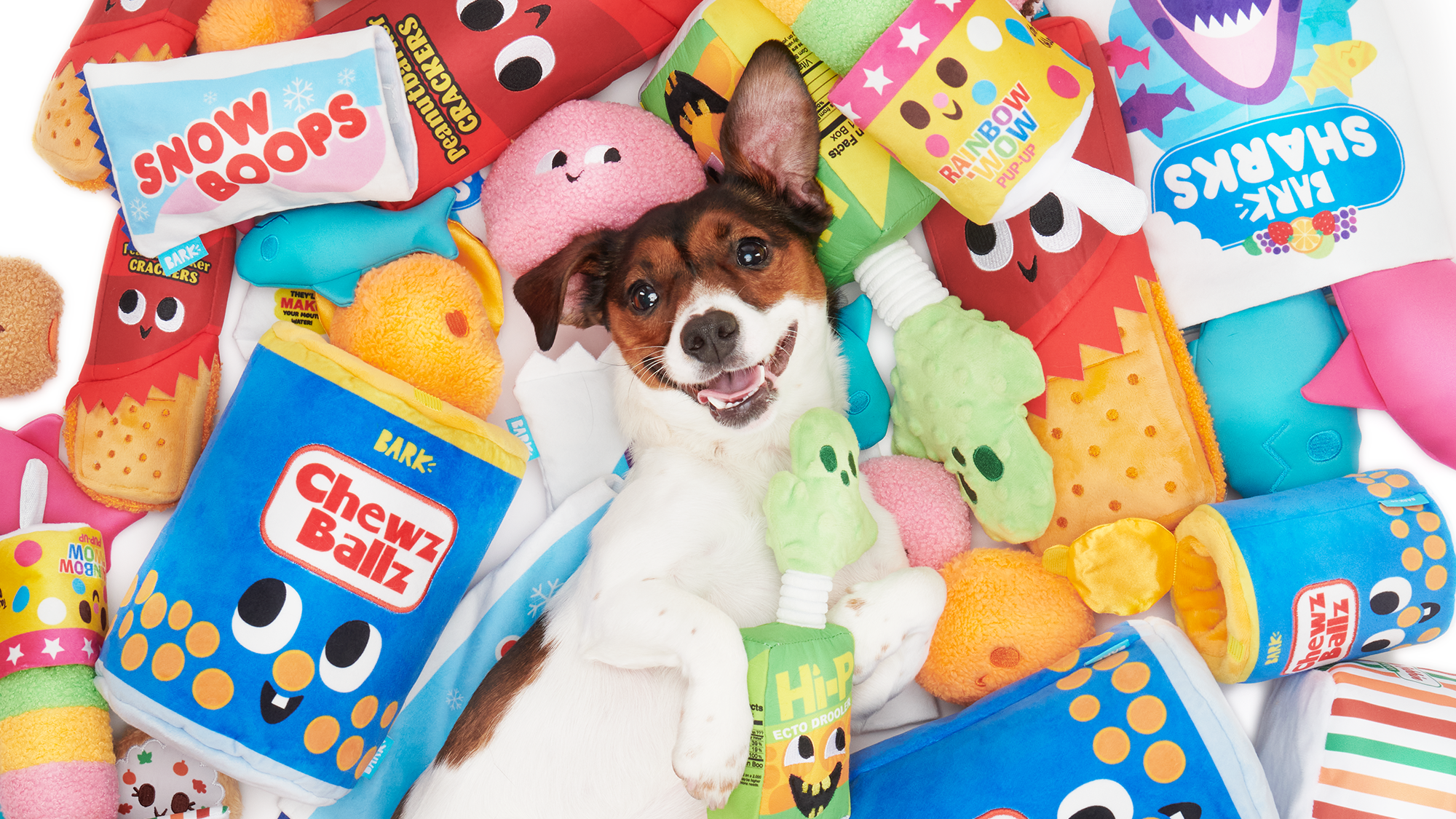Best pet water fountains for cats and dogs – tested by real owners
Your search for the best pet water fountain is over – we’ve tested them all so you don’t have to
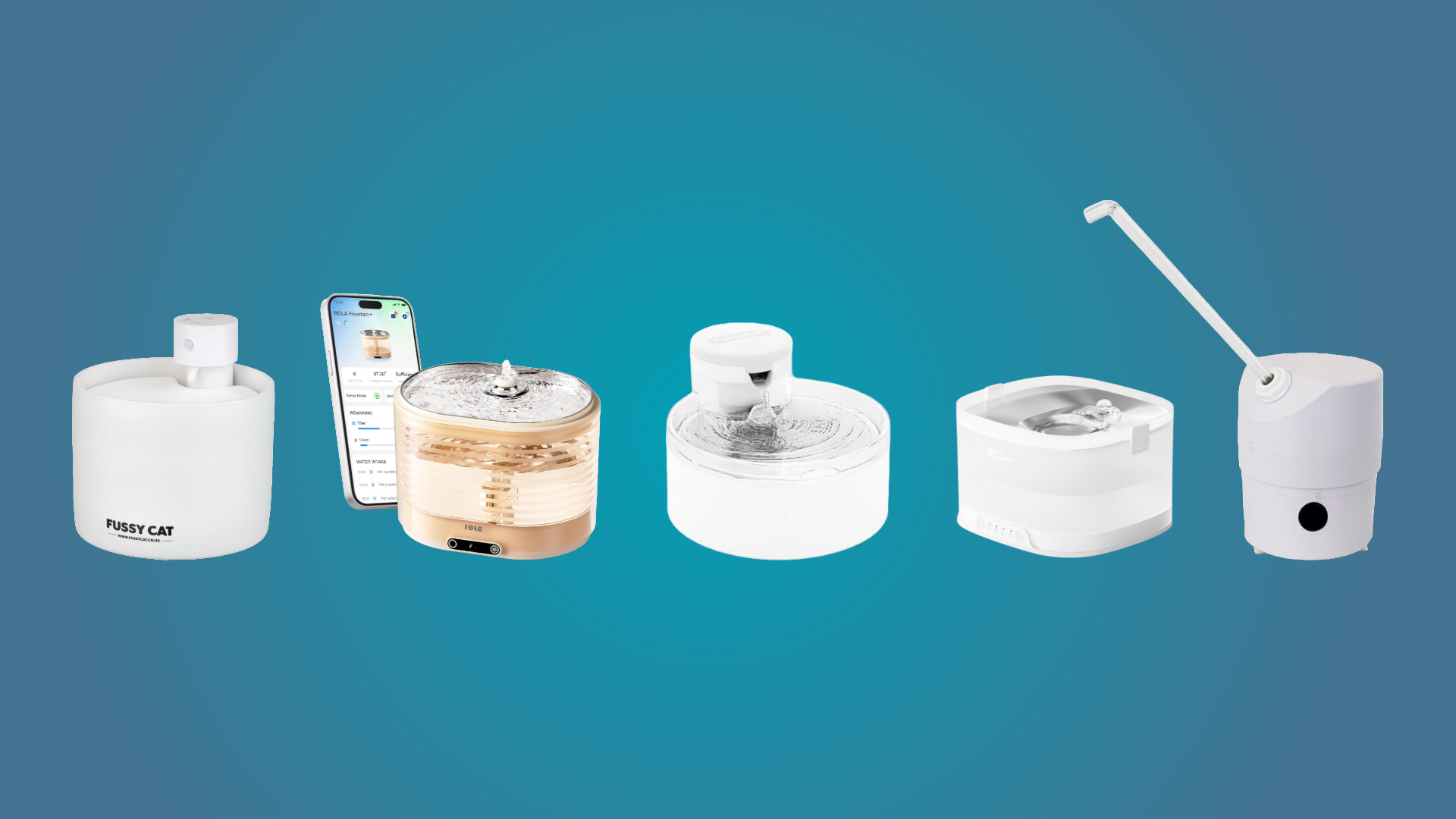
The best pet water fountains provide your furry friend with fresh, clean water and come highly recommended by vets. Not only do they filter out debris, fur, and other dirt, but most pets actually prefer to drink from running water, which can help increase their overall intake.
These fountains are ideal for both cats and dogs, and some even let you track how much your pet has drunk – like our top pick, the Enabot ROLA Smart Fountain – which is especially helpful for spotting potential health issues early.
As a pet writer and cat mom, I've tested a wide range of models – from app-controlled gadgets to budget-friendly basics – and have rounded up my top five picks below. Every fountain featured here has been tested and approved by the PetsRadar review panel, so you can feel confident it's worth your money.
The best pet water fountains
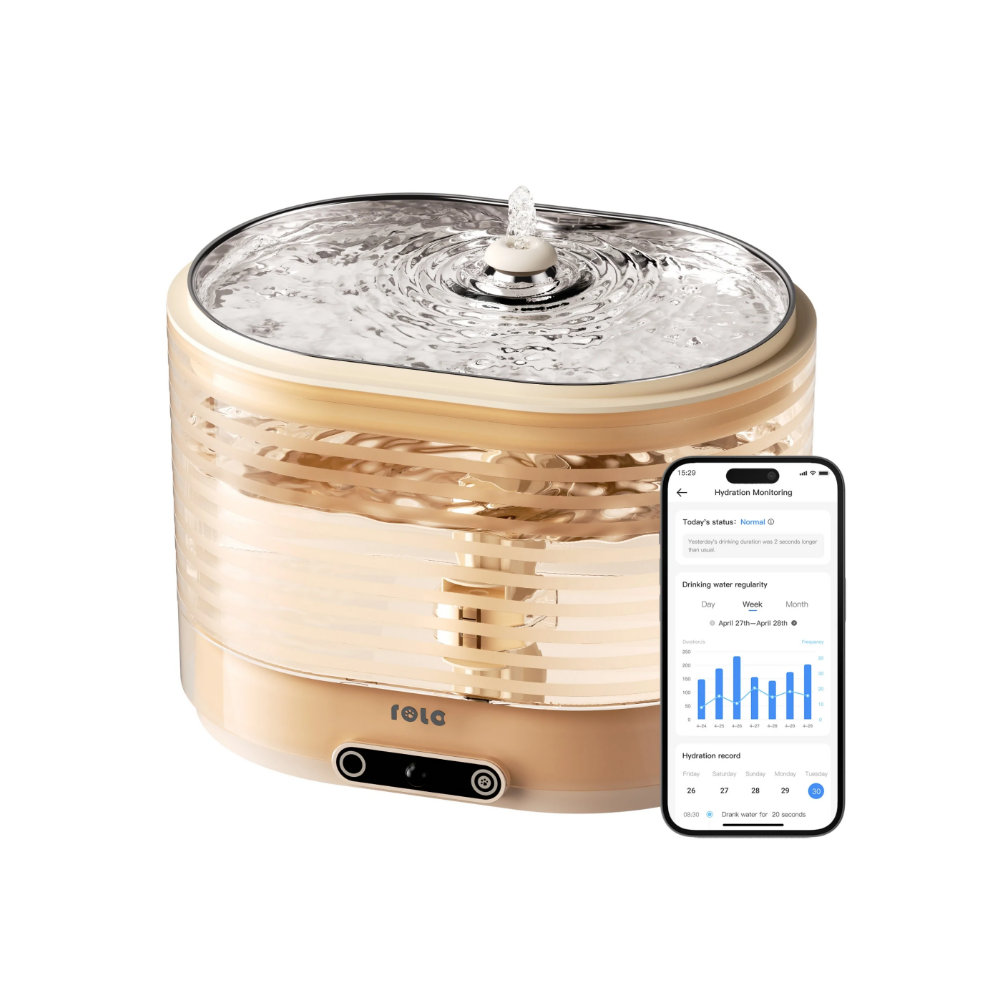
Best pet fountain overall
Concerned that your pet isn't drinking enough? This smart fountain monitors their water intake – which you can track via an app – and notifies you when it needs charging, cleaning, or topping up. Our tester, Adam, found these features "reassuring" and helpful for spotting any potential health problems.
The cordless design boasts an impressive 60-day battery life (much longer than other fountains we've tested), but if you'd prefer continuous power, it also comes in a corded version.
The pump system ensures your pet has constant access to clean water and filters out any dirt or debris before it builds up. As for noise levels, Adam describes the fountain as "extremely quiet" – it didn't disturb him, and his cats were happy to use it after a couple of days.
It is on the smaller side, so if you have a bigger pet, opt for the PetSafe Outlast Cat Fountain instead.
Reasons to buy: App-monitoring, cordless, quiet, good battery life, filters water
Reasons to avoid: Too small for large pets
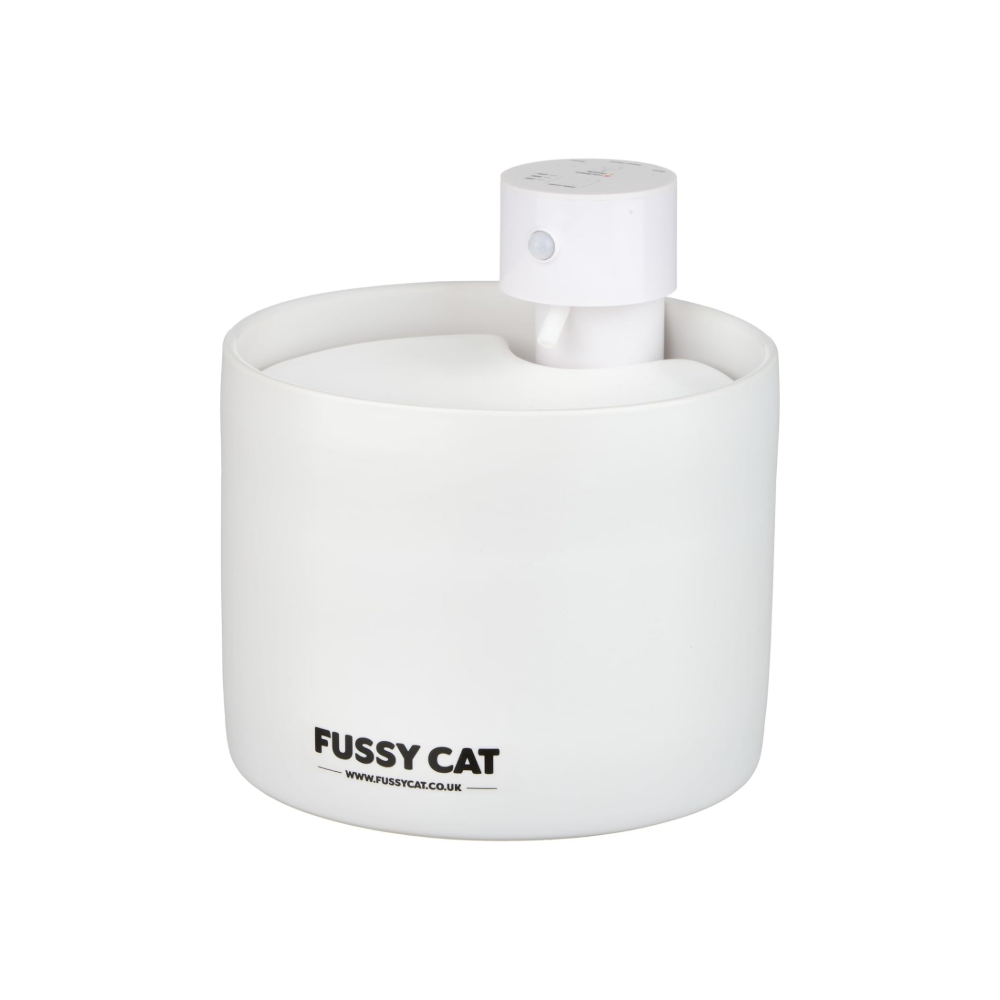
Best ceramic pet water fountain
If your cat has a tendency to tip over their water bowl, this spill-proof fountain will be your new best friend. Made from high-quality, sturdy ceramic, it’s not going anywhere – and I've accidentally walked into it many times to prove it!
Out of all the fountains I’ve tested, this was by far the easiest to set up and operates at a whisper-quiet volume. Not only is it practical and simple to use, but the cordless design looks sleek and minimalistic in my kitchen, and you only have to charge it once a week or so. However, the manufacturer says it can last up to 60 days, depending on usage.
You can choose between two settings: a timer or a sensor. I currently have it on the sensor setting and love how it picks up movement from a meter away, so it doesn’t frighten or put off my cats. I clean the bowl out once a week to keep the water fresh, but it only takes about 30 seconds.
If you don't want to clean your fountain at all, opt for the AquaPurr 4 instead.
Reason to buy: Spill-proof, high-quality, cordless design, easy to install, filters water
Reason to avoid: Needs cleaning once a week as fur gets stuck on the tray
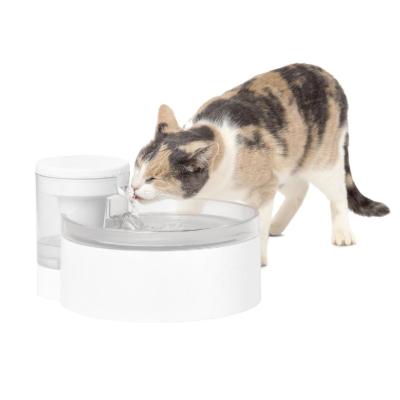
Best corded pet fountain
If you don't want to worry about charging your fountain, this offering by PetSafe is the best choice, providing your cat with a constant flow of fresh water.
It might not be as sleek as the Fussy Cat or Enabot models – and doesn't have any flashy features – but it's simple, practical, and easy to set up. Noise level is super important to me, so I was pleased to find that it was ultra-quiet, and you could only hear the soothing sound of trickling water.
The fountain holds up to 90oz of water, making it suitable for cats and most dogs, while the transparent window makes it easy to see when the tray is empty and needs topping up.
For something more high-tech and cordless, we'd recommend the Enabot ROLA Smart Pet Water Fountain instead.
Reasons to buy: Simple design, quiet, no need to charge, filters water
Reasons to avoid: Not as attractive as other models
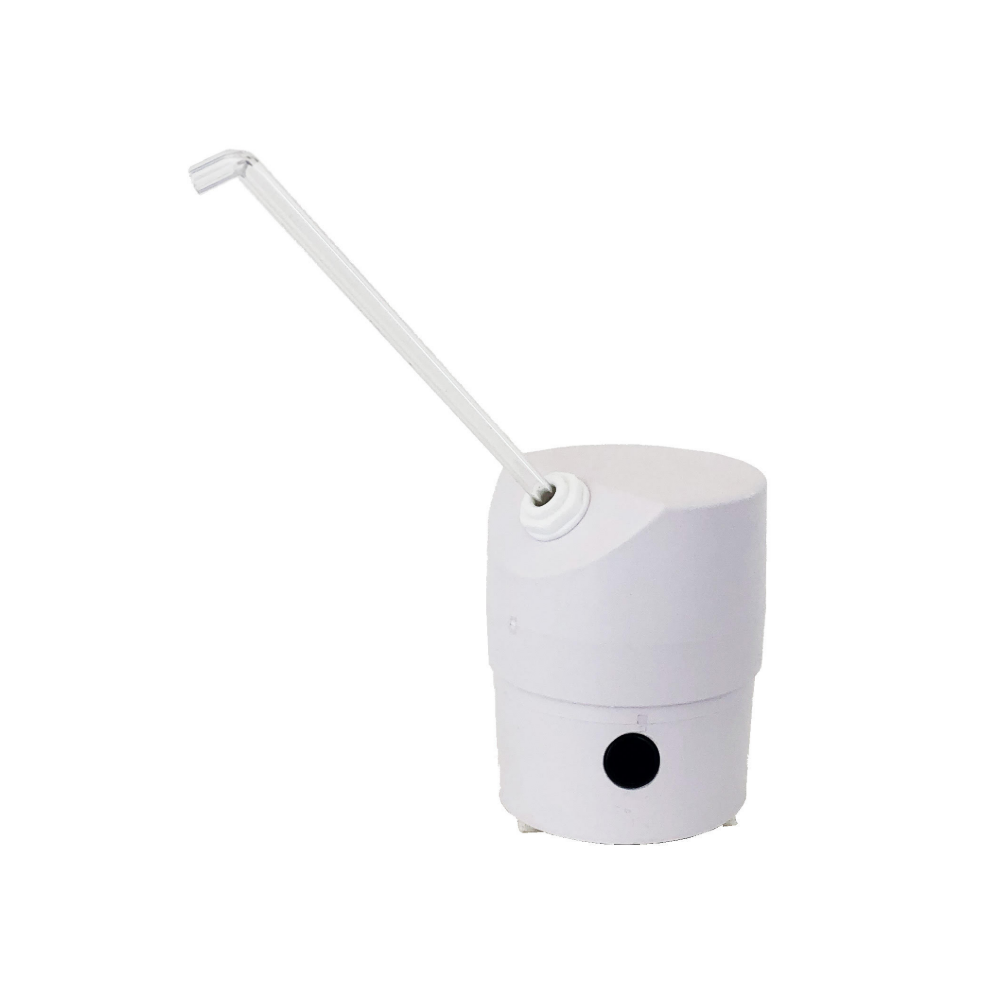
Best tap-connected pet fountain
My favorite thing about the AquaPurr 4? It never needs cleaning. Since it connects to your tap to provide fresh water, it doesn't accumulate any dirt.
Simply connect it to your tap or a plumbing tee valve, and whenever your cat triggers the sensor, clean water will flow from the hose – and stop once they've walked away.
Don't worry: you won't need to keep your tap running constantly, and you can still use it as normal! It's a little tricky to set up, but the founder has put a lot of care and attention into the instructions – and even provides his number and email in case you have any questions.
The device is available in corded and cordless models, but I'd personally recommend the latter, as it looks much sleeker in a bathroom. Since it doesn't have a pump, it's completely silent.
If you need to monitor your cat's drinking habits, the Enabot ROLA Smart Pet Water Fountain might be a better fit.
Reason to buy: Doesn't need to be cleaned, helpful customer service, unique design
Reason to avoid: A bit confusing to install, can't monitor water intake
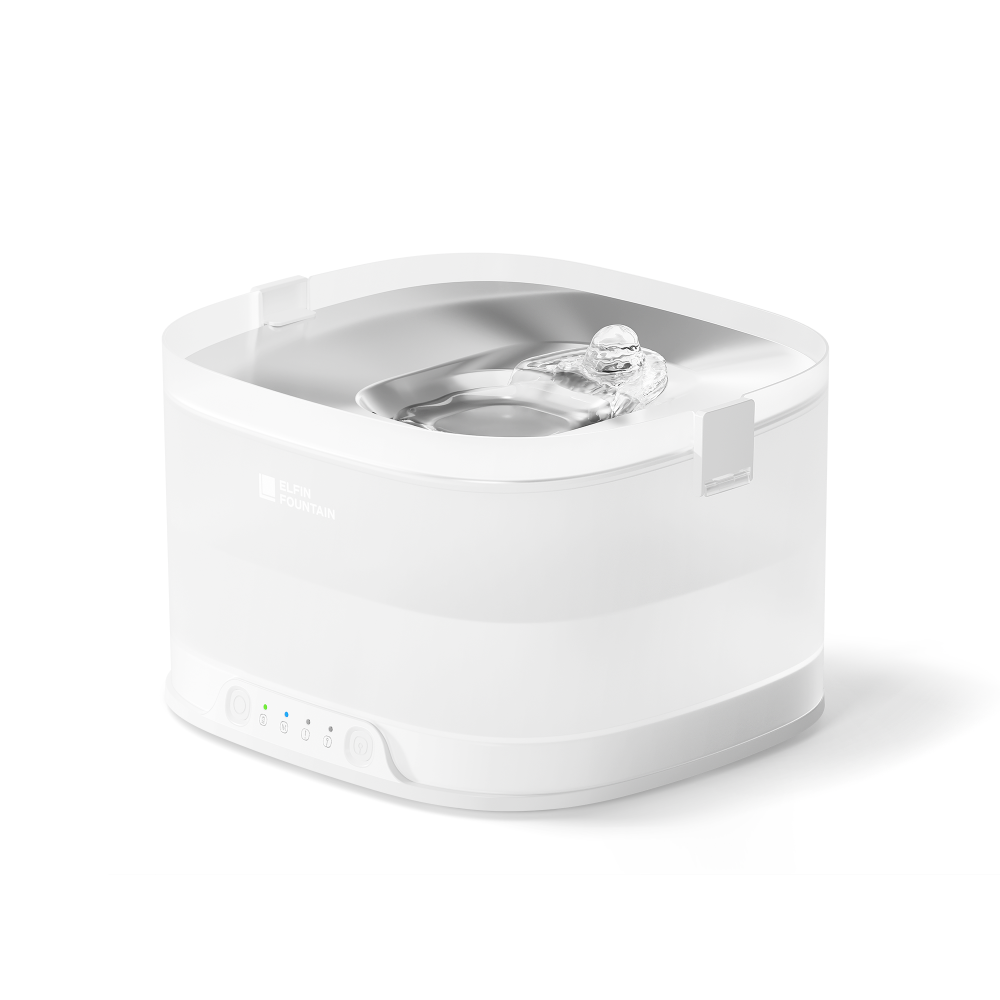
Best pet fountain for dogs
Featuring three different flow modes (continuous, smart, and timer) and a sleek, cordless design, this pet fountain ticks all my boxes. It holds up to 135 oz of water and has a transparent window display, helping you stay on top of your dog's hydration.
I found it pretty easy to set up and had it running within 10 minutes or so. The stainless steel water tray is 0.51 inches deep to prevent choking and is wide enough for mess-free slurps. Unlike other dog fountains I've tested, this one is super quiet – you can just hear the splashing water.
You won’t need to worry about it slipping over either; the base is lined with rubber to prevent movement and spills. Despite being marketed towards dogs, I think this could definitely work for medium to small-sized cats too, making it a versatile option for multi-pet households.
If you're looking for an app controlled fountain, choose the Enabot ROLA Smart Pet Water Fountain.
Reasons to buy: Cordless, sleek design, easy to monitor, quiet
Reasons to avoid: Doesn't include any smart features
Photos from testing
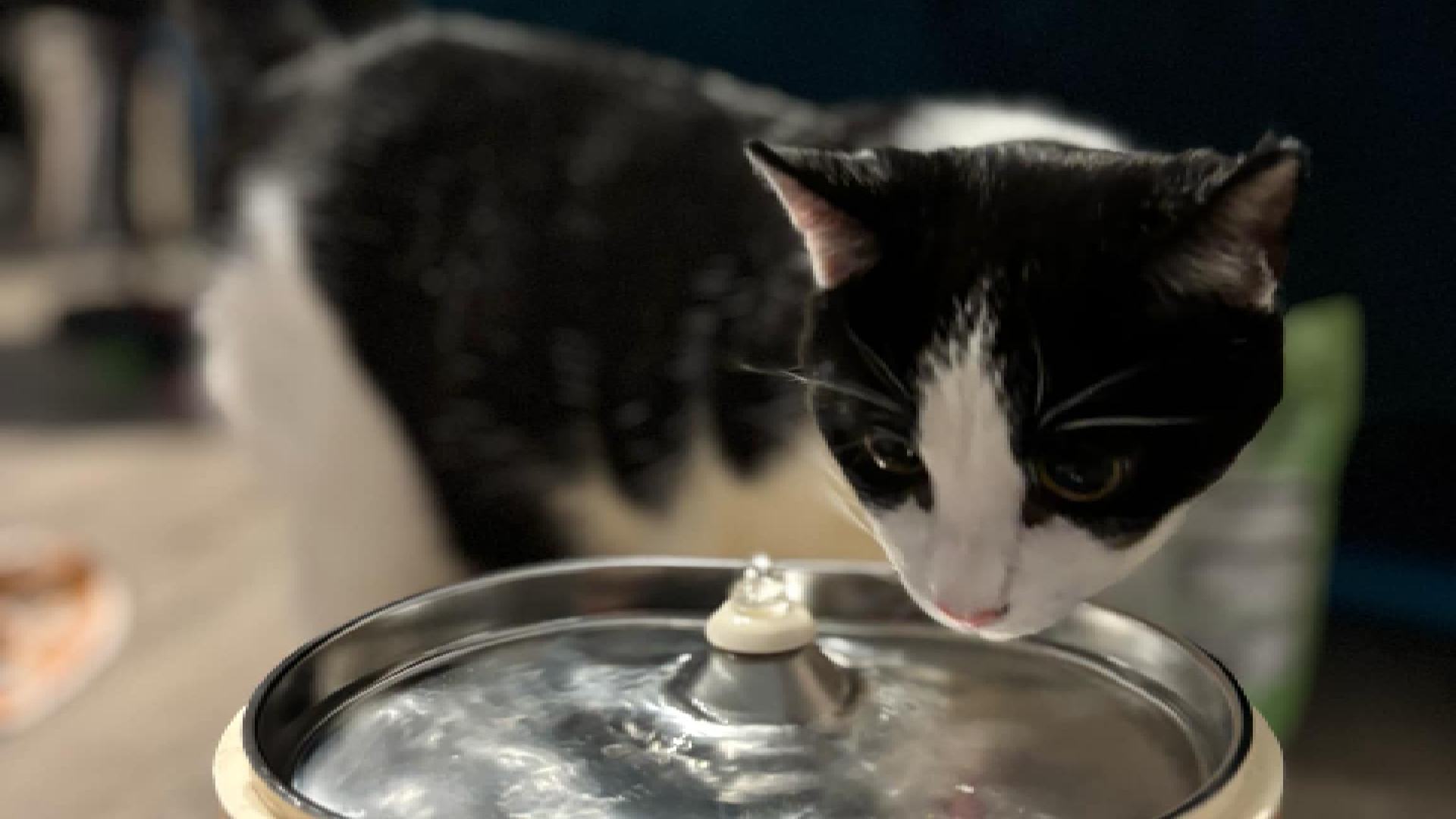
Enabot ROLA Smart Pet Water Fountain
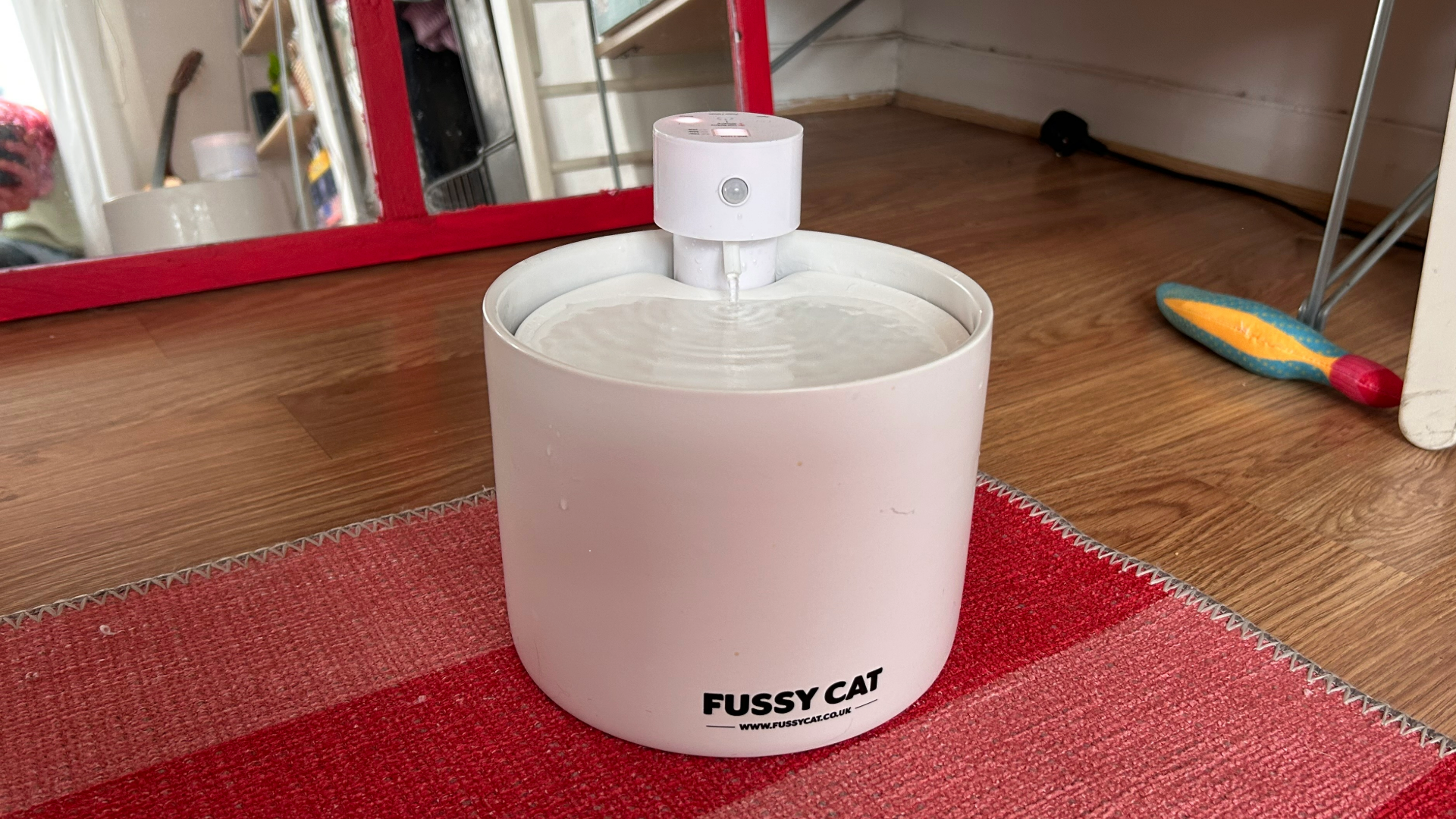
Fussy Cat Water Fountain
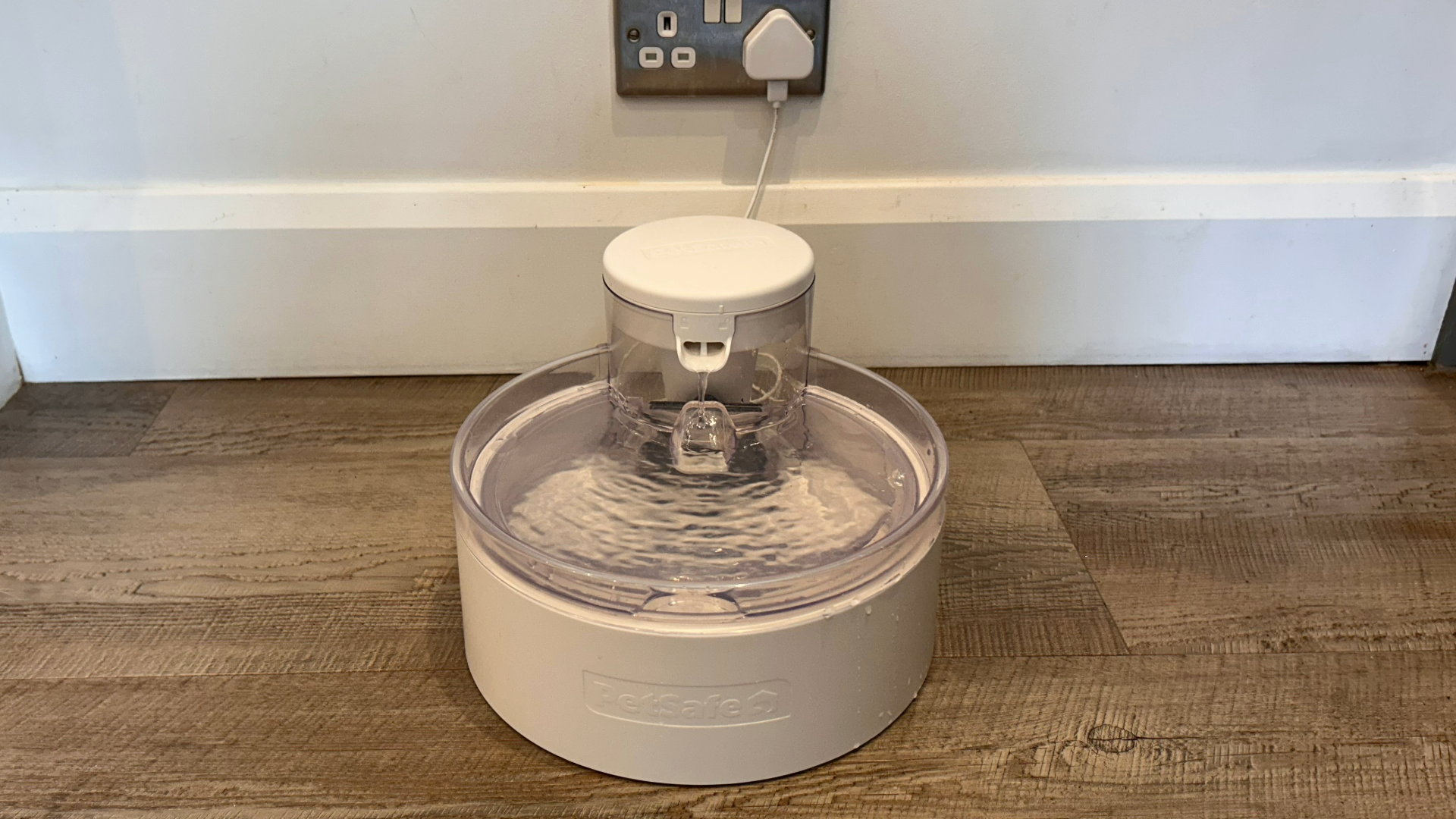
PetSafe Outlast Cat Fountain
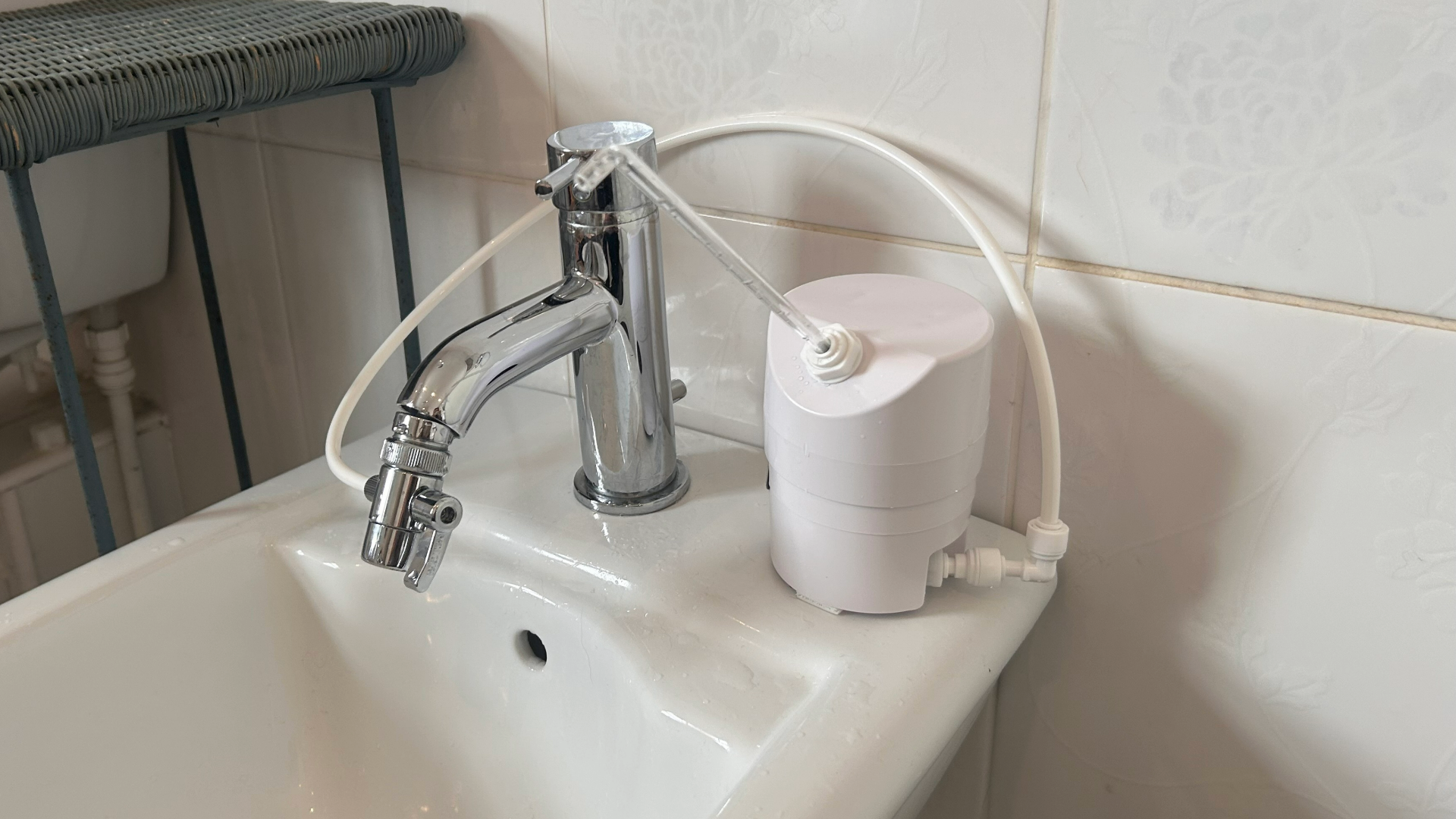
AquaPurr 4
Videos from testing
Other pet water fountains to consider
Closer Pets Large White Two-Level Pet Fountain
Why you can trust PetsRadar
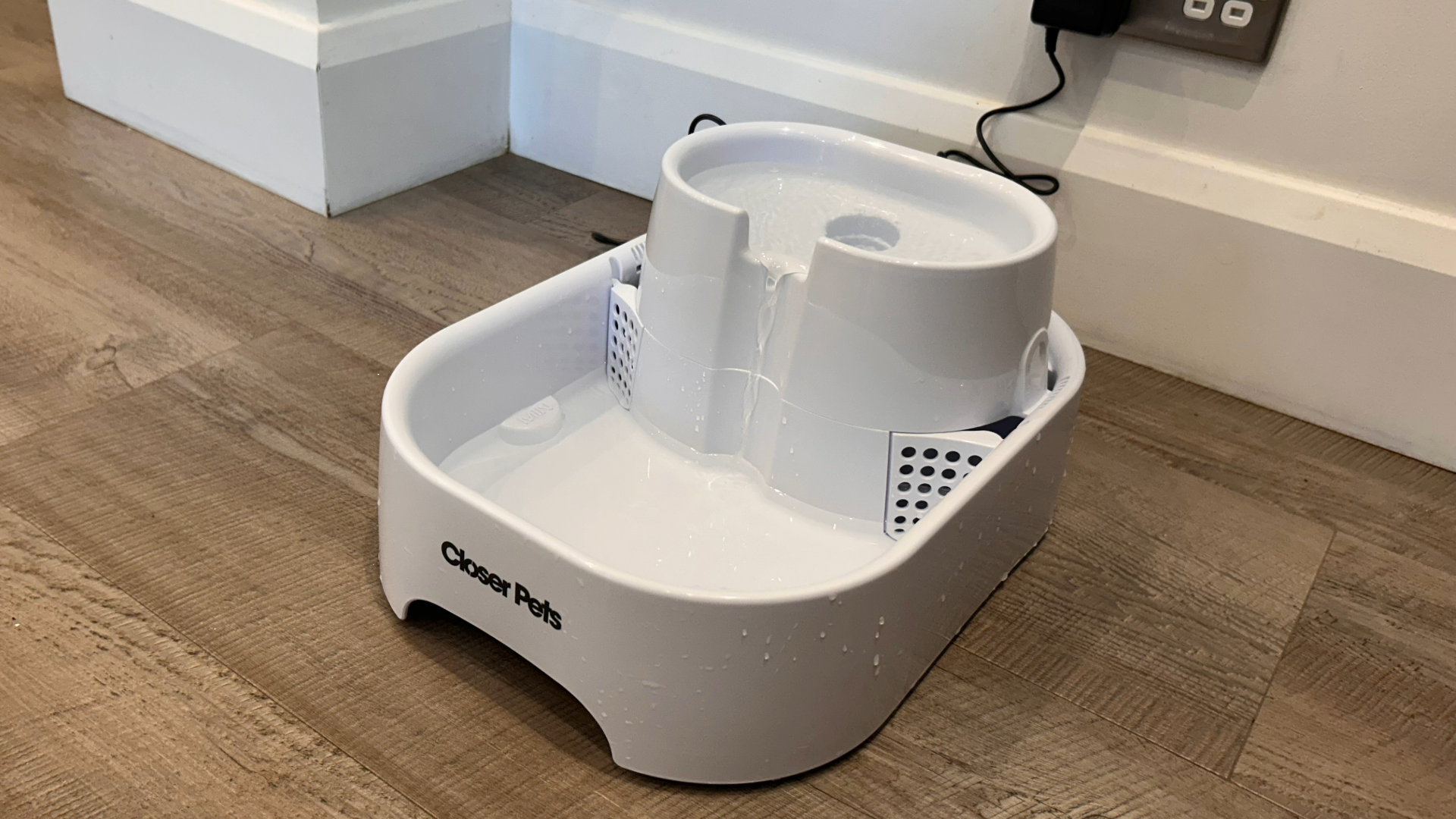
The Closer Pets Large White Two-level Pet Fountain holds up to 202 oz of water, making it a brilliant choice if you have a big dog breed who needs plenty of hydration.
While this device certainly does that job, I found the instructions very complicated and it took me quite a while to get it set up – I eventually had to find a video on YouTube to help.
As well as being tricky to install, the motor is much louder than the other models in this guide, which is a deal-breaker for me – though it might not be for you if it’s kept in another room. Due to its size and corded operation, the design looks clunky and unattractive, and I don't have much confidence that it would stay in place if pushed by a heavy dog.
Compared to other pet fountains I've tested, I wouldn’t recommend it as my first choice, but if you have a particularly large dog and don't mind the design, it could still work well.
How we tested the best pet water fountains
To find the best pet fountains, I researched major websites and independent retailers, narrowing it down to just six options. After reading customer reviews and assessing the materials, I tested most of these models myself – just handing the Enabot Smart Fountain to our writer Adam to try. I know that pet fountains can be expensive, so I followed a strict criteria:
- Set-up: No one has time (or wants) to spend hours setting up a pet fountain, so I've included details on how easy these models were to install.
- Noise level: As someone with sensitive hearing, nothing would bother me more than a noisy pet fountain humming in the background of my day. You can be reassured that all five of these models are pretty much silent – except for the gentle splashing of water.
- Quality: Pets are renowned for pushing over their water bowls, so I ensured that the fountains are well-made and built to last.
- Size: I included a range of sizes to suit every home and pet.
- Appearance: Some pet fountains look clunky and unattractive, and that’s not something I'd want to spend lots of money on.
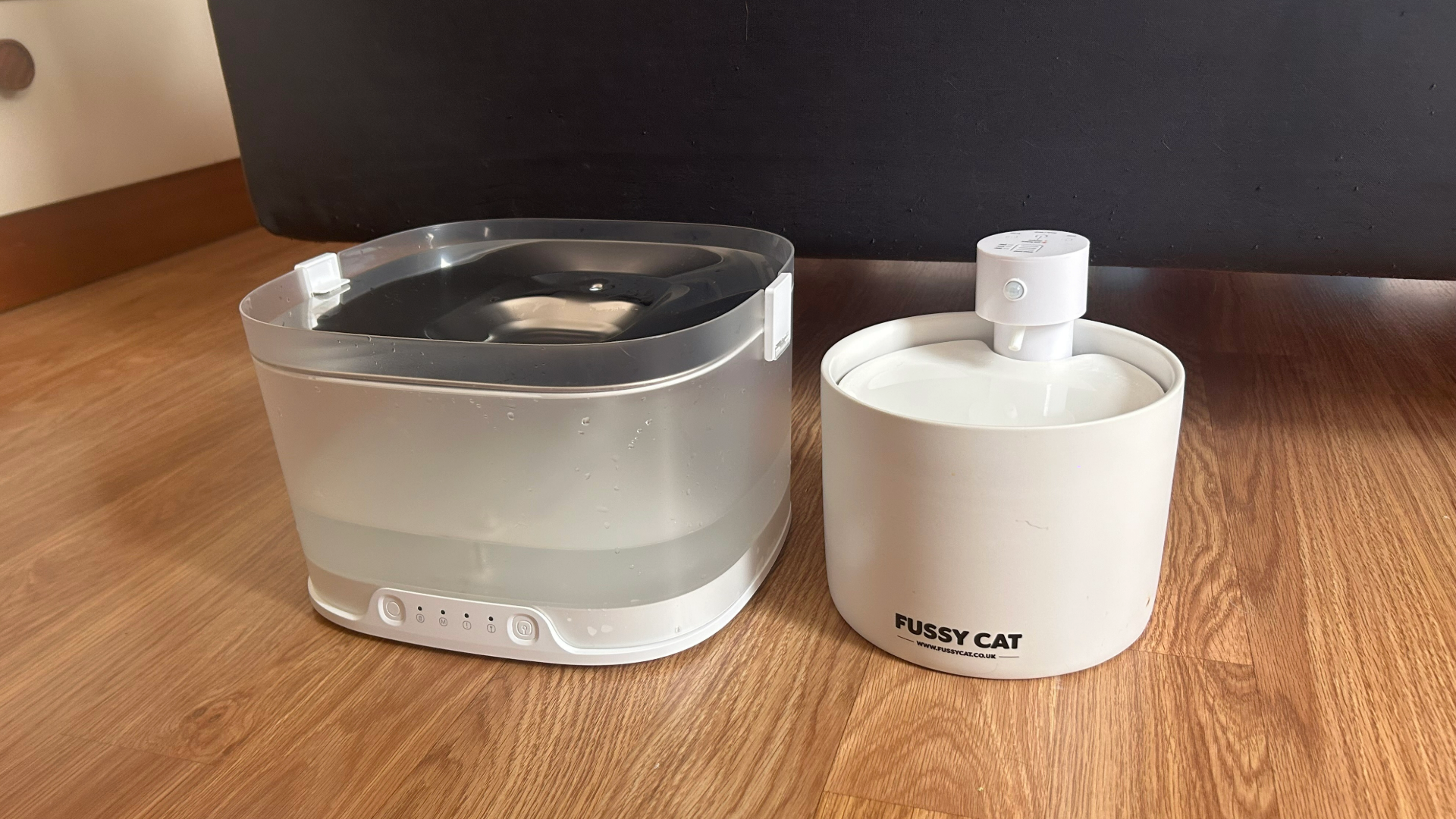
As you'll see above, not every model made the final list – if a product wasn't up to scratch, I left it out. As always, this buying guide is honest and independent, and my views haven’t been swayed by the manufacturer – I’m passionate about real product testing and reviews.
For more information about our process, read our dedicated page on how we test.
Meet our review panel
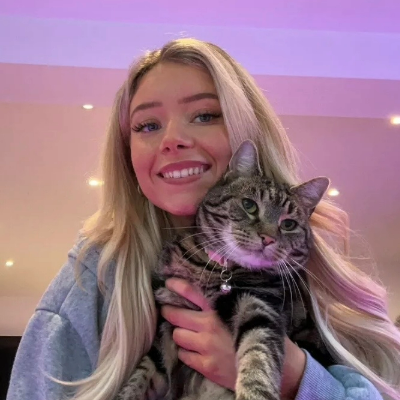
Megan Milstead, Staff Writer
I tested the Fussy Cat Water Fountain, PetSafe Outlast Cat Fountain, AquaPurr 4, and Closer Pets Large White Two-level Pet Fountain. with my cats Nala (pictured), Chilli, Tofu, and Polpetta.

Adam England, Freelance Writer
Adam tested the Enabot ROLA Smart Pet Water Fountain with his cats Bunny and Dougie.
How to choose the best pet water fountain
With so many pet water fountains on the market, it’s difficult to choose the perfect one for you. But there are certain key features which you need to look out for. These will not only ensure that you’re buying a pet water fountain that will encourage your cats and dogs to drink but go a long way to making your life easier too.
1. Easy to clean
Over time, a pet water fountain – just like a bowl – is going to get a little grubby. Pet saliva, dander, and fur will begin to clog the filter and you may find you get some build-up over time. So look for a pet water fountain that is easy to dismantle and clean.
2. Good stability
One of the issues with standard bowls is that there is a danger they could tip, sending water across your floor. When you’re using a pet water fountain, you’re dealing with even more water so you’ll want to keep spillage to a minimum. Opt for a stable fountain. If it’s a light model, then see if it has grip patches on the base. Suction cups are fine on a heavier fountain.
3. Time-saving features
Yes, a pet water fountain’s main purpose is to ensure your dog or cat is getting sufficient amounts of water, fresh and clean on demand but consider the practicalities too. A large capacity fountain means you have to refill it less frequently. Dishwater-proof pieces make cleaning easy. You could also look for a pet water fountain with an alarm or light to indicate when water levels need topping up or a filter needs to be replaced.
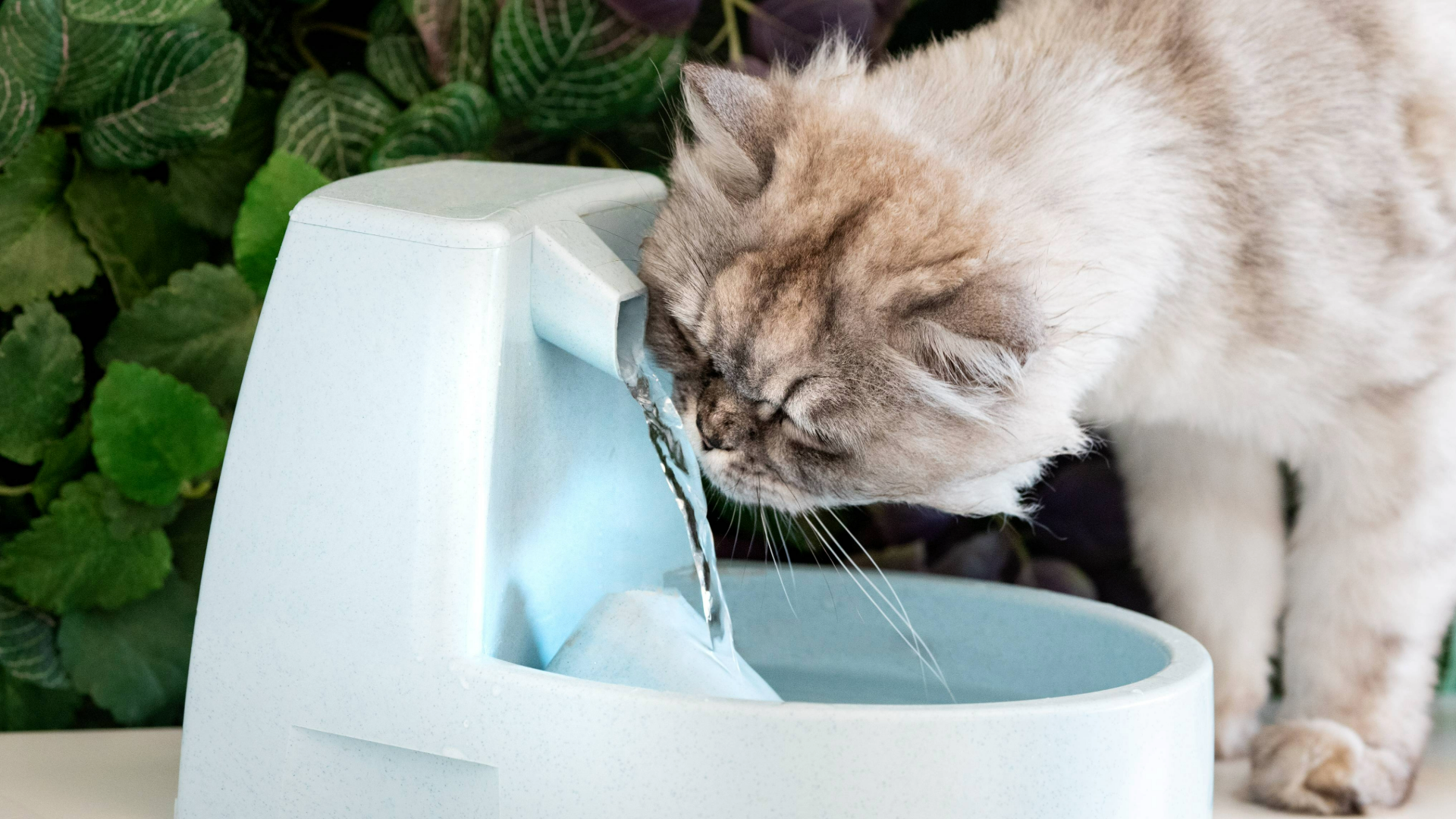
Dr. Godfrey adds: "It’s a good idea to choose a water fountain that is pet-safe, to make sure that your pet won’t get injured while using it – the batteries or any wires should be securely covered.
"It’s also worth considering what size of water fountain your pet will need. Some water fountains are tall enough that they allow your pet to drink with their head still raised, without having to lean down as they would to drink from a bowl. This can be useful for dogs with issues with reflux or a condition called megaesophagus."
Model | Price | Water capacity | Cordless | Best for |
|---|---|---|---|---|
$59.99 | 67 oz | Yes - available in corded and cordless options | Pets who don't drink enough water | |
$69.99 | 67 oz | Yes | Pets who knock over their water bowl | |
$69.96 | 60 oz | No | Pet parents who don't want to worry about charging the a fountain | |
$135 | Unlimited flow from the tap | Yes - available in corded and cordless options | Cats who enjoy drinking from taps and pet parents who don't want to clean a fountain or bowl | |
$89 | 135 oz | Yes | Cats and dogs | |
$31.99 | 202 oz | No | Extra large dogs |
Do dogs and cats like pet water fountains?
Still, water has the potential to become stagnant and this can cause bacteria to form, leading to potential illness. It’s perhaps why animals have long preferred free-flowing rivers and streams.
“Most dogs and cats prefer fountains to bowls,” says Dr. Beth Turner, DVM, of Preventive Vet. “Besides the fact they often like running, cool water, most fountains are wide and therefore don't rub on whiskers.”
Do vets recommend pet water fountains?
Absolutely! According to Dr. Georgina Ushi, DVM, pet fountains provide “a continuous flow of fresh, filtered water.” They also remove impurities like dirt, litter, hair, food, and water, improving taste and health outcomes.
Additionally, research published in Small Animal Practice suggests pet water fountains are especially useful for promoting hydration in aging cats. And they’ve been cited as effective in combating feline cystitis (urinary bladder inflammation).
Vet Dr. Hannah Godfrey adds, "I recommend water fountains to lots of my clients, particularly people with cats. This is because water fountains make water more appealing and attract your pet’s attention, encouraging them to drink more.
"This is particularly useful for cats with urinary tract problems or constipation, where improving their hydration can help to relieve their symptoms and reduce flare-ups."
For these reasons and more, many vets recommend pet water fountains instead of bowls. To learn more, read our page on why cats like running water so much.
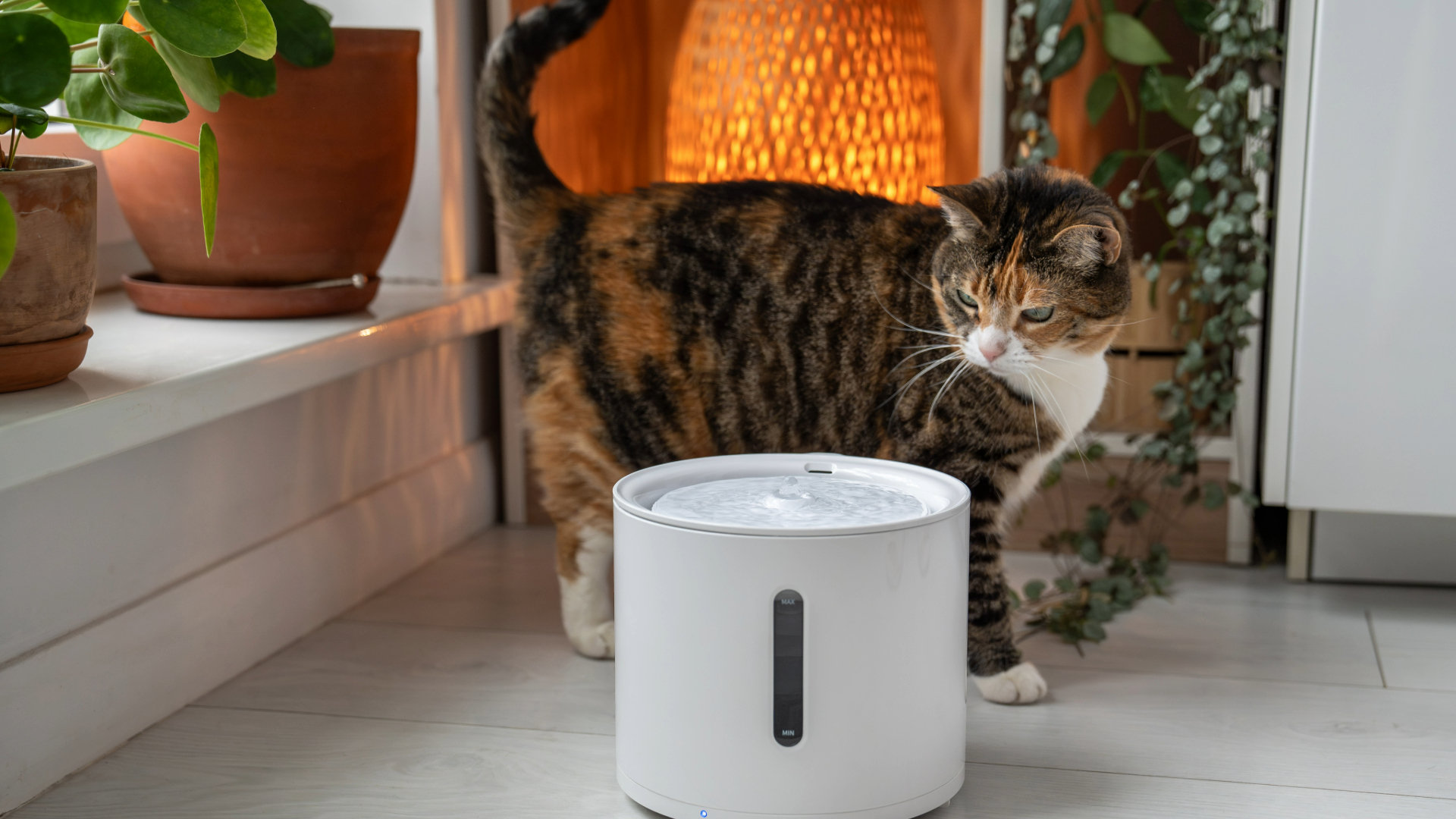
How do you clean a pet water fountain?
So, you’ve read that people find some pet water fountains easier to clean than others but you’re unsure exactly what that entails?
“Water fountains can easily be taken apart and cleaned with warm water and soap,” says D. Beth Turner, DVM, of Preventive Vet. “Some fountains have parts that are dishwasher-safe on the top rack. To help keep it clean, filters must be changed regularly.”
Should you turn off a pet water fountain at night?
Given the environmental impact of running electrical goods (not to mention the cost), it’s natural to be concerned about having a pet water fountain running day and night. But remember this: just because you’re asleep at
night doesn’t mean your fur friend is. Does that mean you keep it on, though?
“Pet fountains can be left running continuously as long as they are properly maintained (water level is monitored, the unit is cleaned, and filters are regularly changed),” says Dr Beth Turner, DVM, of Preventive Vet. “There is no need to turn them off except to clean them. Note, if the water gets below a certain level or runs out, it will damage the motor.”
Read next: How much water should my dog drink?, How long cats can go without water? or our guide to dehydration in cats and dehydration in dogs
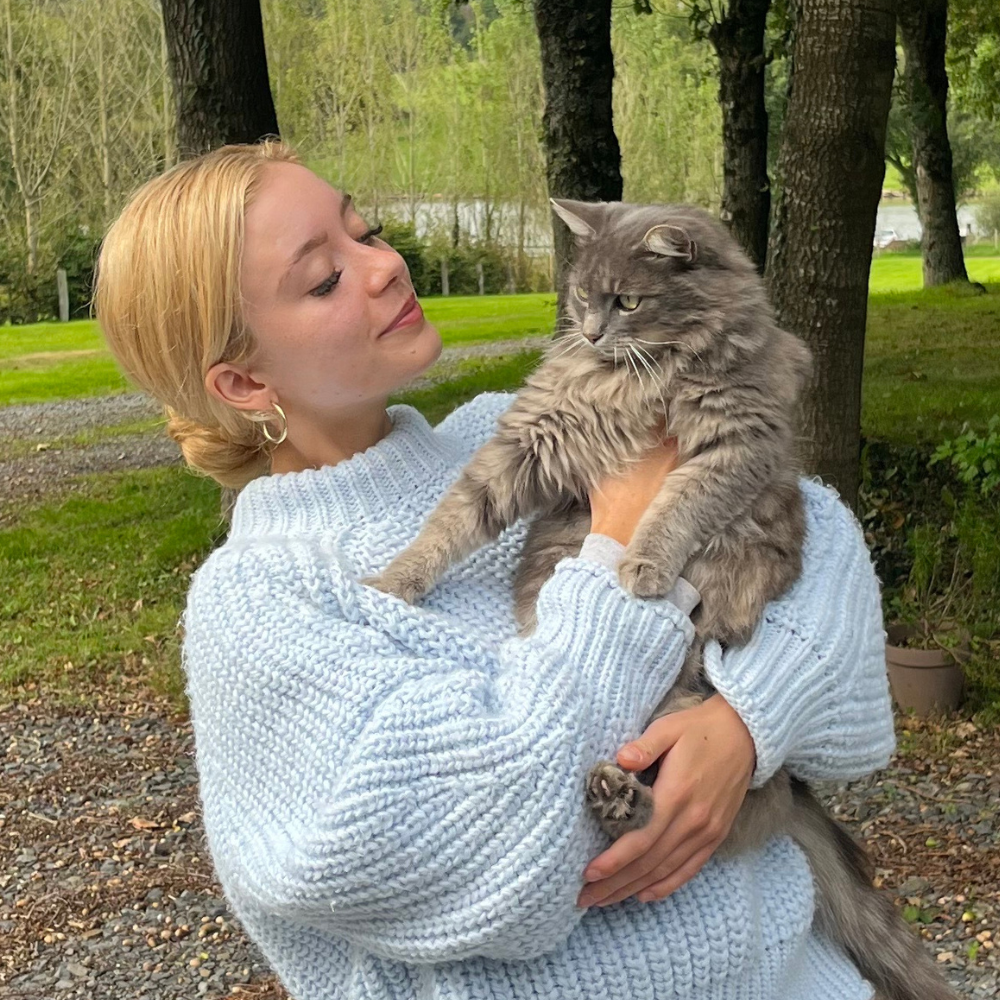
Megan Milstead has been a Staff Writer at PetsRadar since 2023, covering buying guides, reviews, deals, and features. With four cats of her own, she knows how hard it can be to keep your furry friend hydrated, so she’s made it her mission to find the best pet fountains to help. She holds a degree in Journalism from the University of Westminster, an Extended Diploma in Journalism from West Herts College, and is currently completing a pet behavior course through the University of Edinburgh. If you have any questions about the products featured in this guide, her emails are always open!

A 2009 graduate of the University of Florida College of Veterinary Medicine, Dr. Georgina Ushi works in the Tampa Bay area, providing compassionate care to dogs and cats. Alongside her clinical work, she consults for pet well-being brands and writes for her blog, Pet Health Love. Dr. Ushi is passionate about sharing her knowledge to educate and inspire pet owners, and her professional interests include emergency and critical care, wildlife medicine, nutrition, and hospice and palliative care.
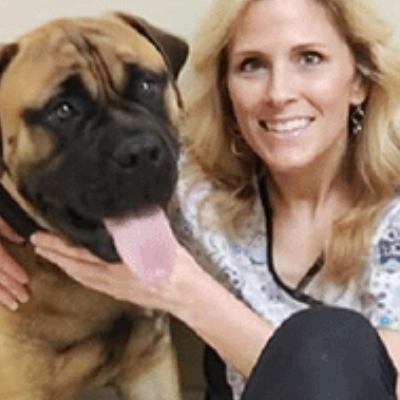
Vet Dr. Beth Turner has more than 20 years of experience. After graduating from North Carolina State College of Veterinary Medicine, she became an associate vet and worked closely with the local shelter. She designed and built her own clinic in 2007 and she also became her county's shelter vet. She sold the practice in 2019 and moved across the country to Colorado where she’s enjoying all that it has to offer with her family and rescue pup.

Hannah graduated from the Royal Veterinary College in 2011 and began work straight away at a busy mixed practice. Initially, she treated all species, but focused on small animals from 2014. She has a passion for soft tissue surgery, ultrasound, and canine and feline dentistry, having completed additional training in these areas.
Edited by Georgia Guerin and Alexis de Leaver.
We regularly review our buying guides to ensure the products are relevant, available and up to date. This page was last updated in June 2025 by Megan Milstead.
Get the best advice, tips and top tech for your beloved Pets

Megan is a Staff Writer at PetsRadar, covering features, reviews, deals, and buying guides. She has a wealth of experience caring for animals, having grown up with dogs, cats, horses, guinea pigs, and more throughout her life. She studied BA Journalism at the University of Westminster, where she specialized in lifestyle journalism and was editor of Smoke Radio’s lifestyle website. Megan works alongside qualified vets and accredited trainers to ensure you get the best advice possible. She is passionate about finding accurate and helpful answers to your pet-related questions.
